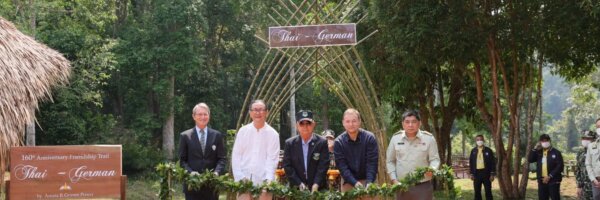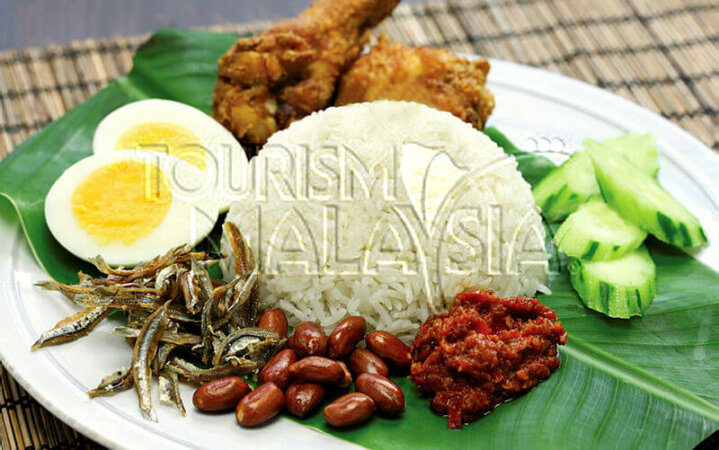
Malaysia Truly Asia – Food Haven
Story by Kathleen Pokrud
Photo by The Embassy of Malaysia and Tourism Malaysia
Foreword by Dato’ Jojie Samuel
Ambassador of Malaysia to Thailand
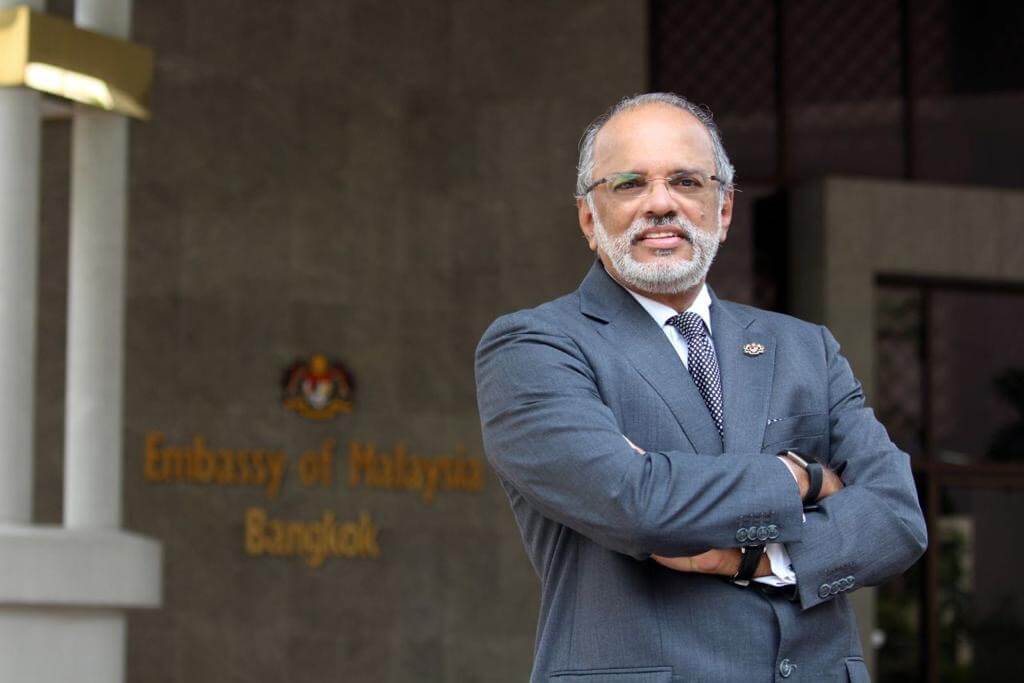
Once again, I would like to thank Ms. Kathleen for her initiative to help us to promote Malaysian culinary. Previously, an article about Peranakan food in Malaysia was published in Expat Life in Thailand. As a multiracial country, Malaysia’s colourful cultures are demonstrated through its food, including traditional and modern cuisines.
Malaysian food is a mix of outstandingly delicious food and an affordable price tag to match, there is something for everyone. Eating out in Malaysia is a real gastronomic adventure. In Malaysia, eating is agreed to be a national passion for all Malaysians. Food has been a regular topic in conversation. I believe that there is no place that is more truly Asia than Malaysia, especially when it comes to food and travel.
Needless to say, Malaysia is a beautiful and diverse country, which the food is a reflection of the many races that make up our country. From up north in Penang to down south in Malacca, you could explore the beautiful sights and even more delicious food at some of the best destinations Malaysia has to offer. Malaysia, Truly Asia indeed.
Dear readers, I hope you enjoy reading this article.
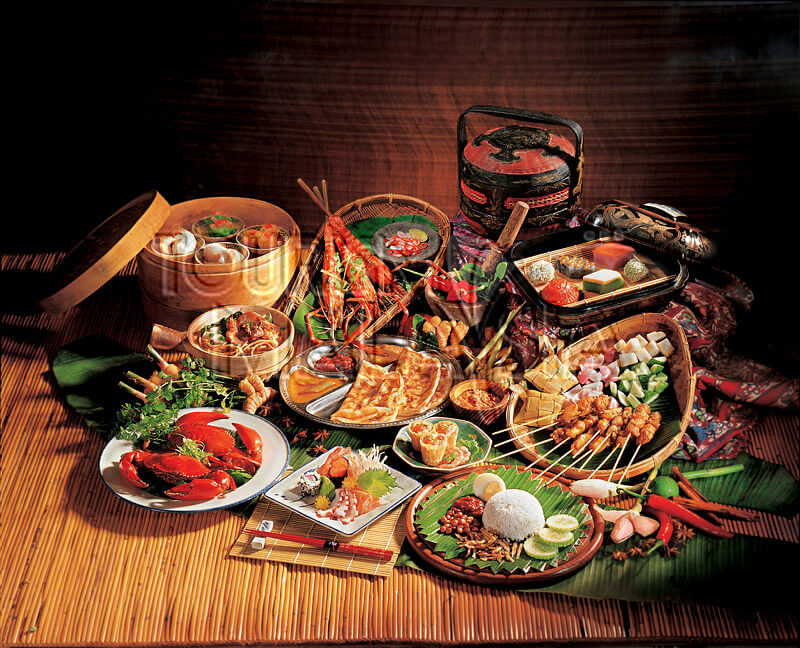
Malaysia is a country that celebrates its’ multiculturalism. This encourages the cultural diversity of Malaysian cuisine. Many culinary traditions coexist in Malaysia, such as Malay, Chinese and Indian. Similar to other countries, Malaysian food recipes are passed down through the generations and has evolved to suit modern day preferences and trends. The result is an array of enticing traditional favourites and modern offerings using a trove of local ingredients to suit multiracial palates. The term “Gastrodiplomacy” has been introduced to refer to how countries use their national cuisines to promote their countries. The Malaysian kitchen with their rich combination of spicy and flavourful cuisine is well placed to make Malaysia a food haven. I recently sat down with Datin Catherina Cherian Samuel, spouse of H.E. Dato’ Jojie Samuel, Malaysian Ambassador to the Kingdom of Thailand to learn how Malaysia is poised to be a gastronomical haven in Asia.
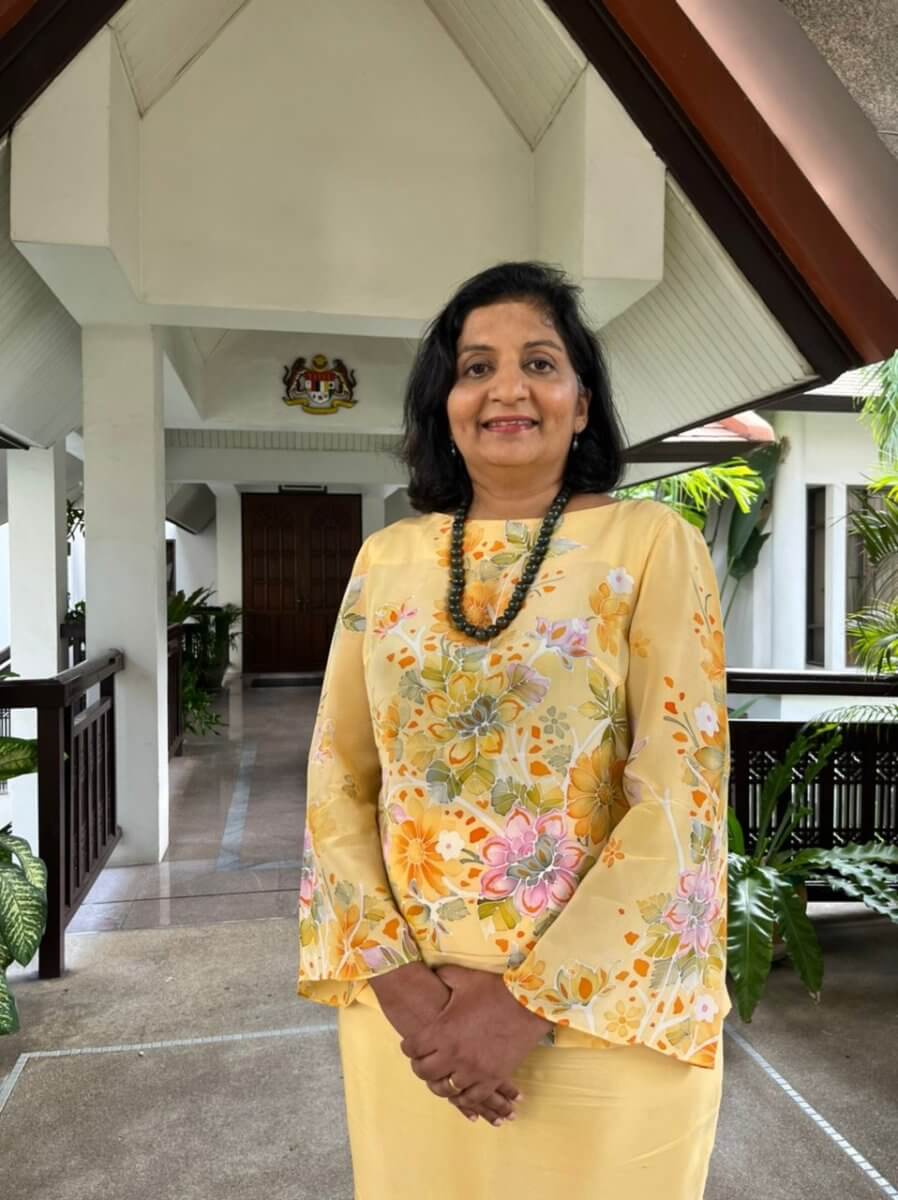
Malaysia as a country has brought together many different cultures. It is the heart of SE Asia. The food could be considered one of the most attractive and enjoyable experiences in Malaysia. I asked Datin Catherina what truly defines Malaysian Cuisine, “If there is one thing that unites all of us Malaysians; it is the love of good multicultural food that we have. Food has always been a vital part of the Malaysian identity. We pride ourselves on a variety of national dishes, which are consumed as a large portion of our regular diet. Malaysian cuisine includes Malay, Chinese and Indian food – a great mix of ingredients, techniques, and flavours. If you plan a trip to Malaysia, be sure to squeeze some time to explore the food. Also on the list of must try items are the food from East Malaysia which is located on the beautiful island of Borneo. The food there comprises of the bounties of the sea paired with locally grown grain, fruits and spices. Simple and fresh, the food in Borneo reflects the traditional knowledge of the natives of the land with influence from the Chinese and other immigrants who have called this mystical island their home for generations,
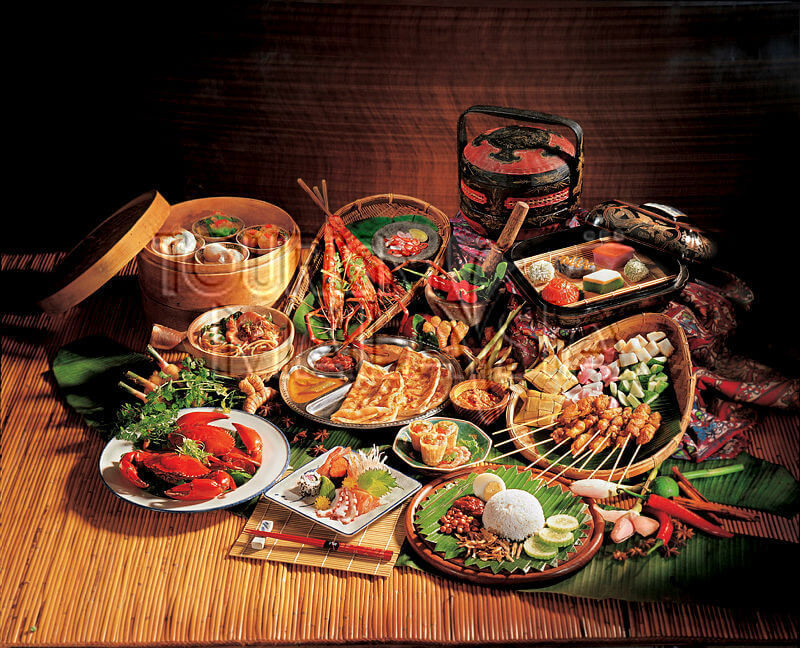
Catherina clarified further, “The food of Malaysia is known by the region they come from with each bearing its’ signature dish with unique taste and flavour. Some such favourites are satay with peanut sauce, asam pedas, kolok mee, nasi dagang, laksa and fish head curry. Rice and rice based noodles are the staples in Malaysian cuisine. As it is the norm in Asia, rice is usually eaten together with meat and vegetable dishes, curries and condiments. Malay food liberally incorporates aromatic spices such as cinnamon, coriander seeds, star anise, turmeric, nutmeg and candlenuts. Coconut is used in many dishes – rice, savouries and desserts. What gives the mouthwatering delicacies a distinct flavour is the skilful use of herbs such as lemongrass, ginger, galangal and leaves of turmeric, pandan and kaffir lime plants, In the northern states of Malaysia, the influence of Thai is evident in the preference for sticky rice, sweet desserts and mango incorporated in local dishes. In the east coastal states of Malaysia where fish is plentiful, keropok (fish snacks) are sought after by all.
On the subject on how Malaysian cuisine has evolved over the years, Datin Catherina explained, “The story of Malaysian food is part of the nation’s history, of course. From around the 12th century, the Straits of Malacca provided an important and busy travel route for merchants from China, India, the Middle East and Europe. They traded and exchanged their wares in the area that is now known as Melaka (Malacca) and Pulau Pinang (Penang). In the 15th century, Hang Li Po, a Chinese princess was sent to marry a Malaccan Sultan in an effort to strengthen relations between the two countries. The princess brought along an entourage of Chinese who settled in Malacca. These early Chinese settlers along with the Chinese merchants who plied that trade route ended up marrying local women and settling namely in Penang, Malacca and Singapore which later came to be known as the Straits Settlements. The Straits Settlements was the name given during the British rule from 1824 – 1957.
The British also attracted Chinese migrants to work in the tin mines of that era and to conduct business in the commodities such as rubber and spices. The early Chinese settlers contributed significantly to the prosperity and culture of these states. The food of the Chinese in the Straits Settlements is known as Peranakan food. They are delightful concoctions of Chinese food which include local spices and flavours, a testimony of how the early Chinese settlers had assimilated with the locals in the new country. Non Peranakan Chinese food has influenced Malaysian cooking through the wide use of garlic, ginger, rice wine, sesame oil and soy sauce.

As mentioned earlier, the fact that the fact that the Straits of Melaka was an important commercial route did not go unnoticed. In the 15th century, the Portugese invaded Melaka with the intention to monopolise the spice trade and spread Christianity. The Portugese too, influenced the food in Malaysia. There exists today the Portuguese settlement in Melaka which boasts of the food of their ancestors that has evolved to satisfy the tastebuds of their Malaysian descendants. Portugese devil curry, fish dishes and cakes are what we enjoy in Melaka. Following the Portuguese, the Dutch and the British colonial masters also influenced the food in Malaysia, namely in the Eurasian communities who make it a point to serve their traditional delicacies alongside rice and spicy curries!
Apart from the early Indian traders who settled in the Northern States of Penang and Kedah, the majority of the Indians and Sri Lankans currently residing in Malaysia are descendants of the people brought into the country by the British. A large number were brought in to work in the rubber plantations and the railways in the 19th century. A smaller group of educated Indians were later brought in to work in the local medical, educational and civil services established by the British. The Indians brought with them a noteworthy influence on local cuisine with curries, biryanis, roti’s and snacks such as murukku which are served at all festive occasions regardless of ethnicity.
Datin Catherina commented frankly, “I would say Malaysian cuisine deserves more global recognition than it currently has. It is not as well known as Thai, Korean and Japanese cuisine. Nonetheless, I believe that, real food enthusiasts will appreciate the true flavours and at the end of the day our cuisine always stand out among the ‘foodies’. You have not truly experienced Malaysian cuisine until you thrill your taste buds with all the good food we have to offer.”
There are Malaysian restaurants in major countries around the world. One such popular restaurant is the Papparich restaurant that serves Malaysian favourites such as Nasi Lemak and Chicken Rice in Australia, Singapore, Brunei and in the US. In addition, we are proud of the Reunion Malaysian Café and Kitchen in Washington DC that has grown significantly since its opening, serving Nasi Lemak, Nyonya Laksa and durian crepes to homesick Malaysians and gourmet eaters in the US. In addition, we have Malaysians who are very passionate about introducing the world to the rich flavours of Malaysian cuisine. Food experts like Chef Wan, Malaysia’s celebrity chef and Ping Coombes, the past winner of MasterChef UK are prominent figures. We are very grateful to have them promoting Malaysia cuisine abroad.
As it is with other countries, Malaysia’s food culture or trends must have changed quite significantly over time. Datin Catherina explained, “The Covid 19 pandemic has caused a drastic change in the lifestyles of Malaysians since early 2020, and this also meant a big change for the Malaysian diet too. It has become quite obvious that Malaysians are increasingly driven by health concerns and want their food to contribute to strong and healthy bodies. We are seeing a trend towards healthier eating. Malaysians are more conscious about their food consumption; hence healthy eating will continue to be a huge part of food trends.”
She elaborated further, “Given the fact that most urbanites have very little time to cook on a daily basis, the eateries offer pick-and-go food where such wraps, sandwiches or poke bowls on their way back from work or even during busy lunch hours. Malaysians are also known for their ”Mamak restaurant culture” and it is especially popular among the young adults. These are Indian Muslim eateries that offer fast service at reasonable prices. Best of all, they are open 24 hours a day, making them an easy and convenient choice for people from all walks of life.
Preserving the traditional Malaysian cuisine and local favourites are important to us because they are part of our heritage, “With the new generation living a fast paced life and being more health conscious, traditional and laborious methods of preparing food need to be reconsidered. The challenges are to maintain the original taste of food whilst taking cognisance of the need to incorporate healthy cooking methods and minimising cooking time. As we are aware, food and tourism go hand in hand. Other than sightseeing, islands and beaches, the food offered has brought many visitors to our tropical paradise.
According to Datin Catherina, “The authorities such as Tourism Malaysia and Malaysian External Trade Development Corporation (MATRADE) have organised events around the world promoting traditional Malaysian food as an attraction to tourists.
Nasi Lemak: National dish of Malaysia
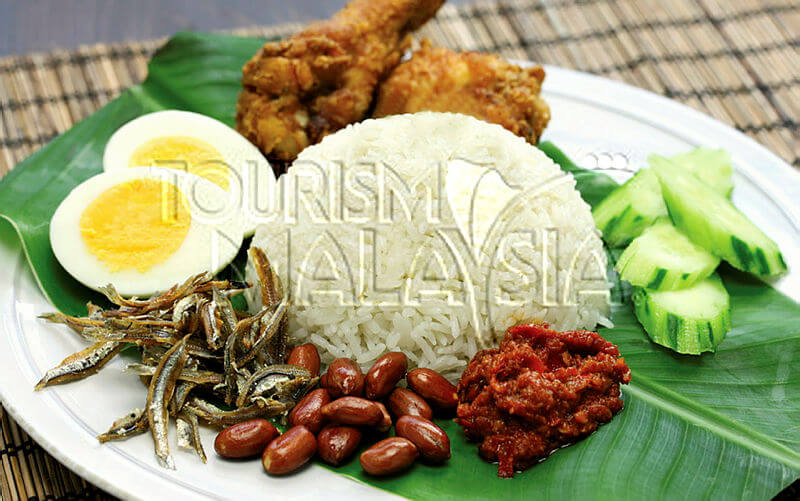
In Malaysia, Nasi Lemak is what we would call comfort food. You can find Nasi Lemak in almost any eatery, be it at street vendors, restaurants and hotels. This humble dish comprising of coconut infused rice served with a spicy anchovies sauce has grown to include a long list of accompaniments. The most popular one is chicken and beef rendang. These chicken and beef dishes were, in the past, reserved for festive occasions. Comprising of meat slow cooked with aromatic herbs, spices and large quantities of coconut milk, it has found its way to the heart of locals and foreigners alike.
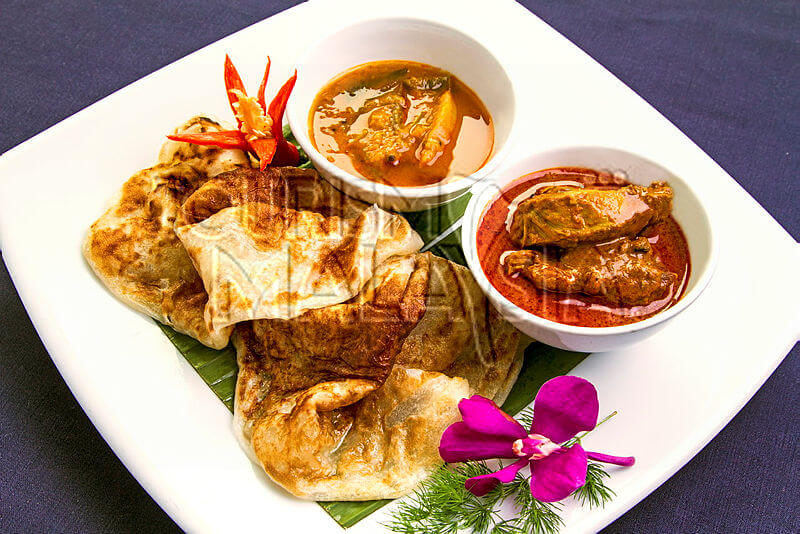
As our interview draws to a close, I agree with Datin Catherina, “Malaysian food has similarities with those of its neighbouring countries such as Thailand, Indonesia, Brunei and Singapore as we use similar raw ingredients which are found abundantly in this region. However, in terms of tastes and flavours, cooking techniques and preparation methods our food differs. To the discriminating palate, Malaysia is a food haven not to be missed!


